What is CEMAC?
- The birth of the Economic and Monetary Community of Central Africa (CEMAC) was heralded as a means to create an atmosphere in the sub-region of Central Africa where all the member states could enjoy its benefits (Background Note: Central African Republic, 2005).
- Member states are still taking unilateral actions.
- There are perceptible border tensions despite the existence of a common passport for all six states.
- Overall, the origins of this integration can be traced to the early sixties, when the first free-trade agreements were concluded (yet some trade restrictions still exist) (Background Note: Central African Republic, 2005).
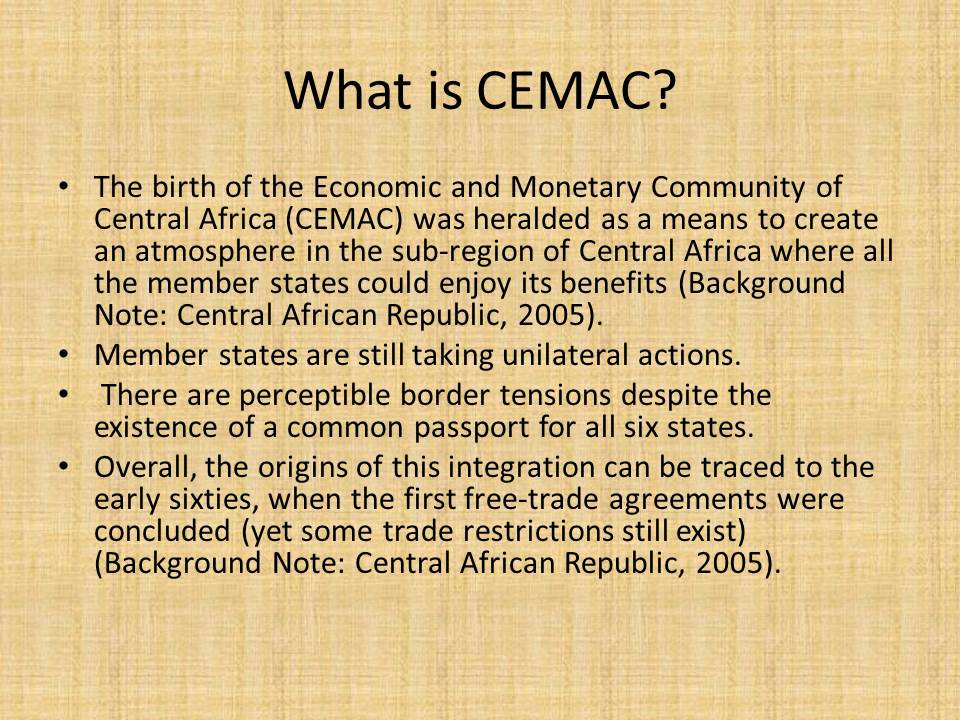
What is Regional Integration?
- Its express purpose is to promote trade, peaceful relations, and economic cooperation.
- Regional integration can be considered a method by which states enter into a bilateral and multilateral agreement to fulfill a common purpose, which can be economic, social, or political in nature (Agbetsiafa, 2010).
- The current international climate is predisposed toward a trend in regional integration.
- This is due to the apparent benefits this entails for member states.
- Countries within the same region tend to promote trade and peaceful relations due to their inherent proximity (Agbetsiafa, 2010).
- The modern day version of regional integrations entails far more commitment toward specific regional agendas than what was seen in the past.
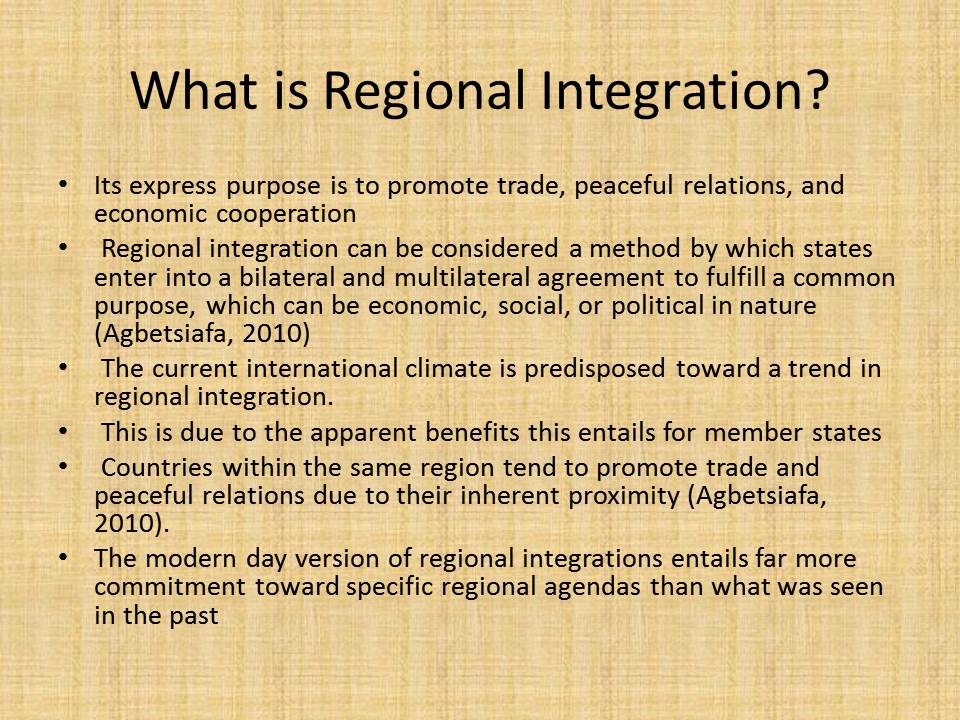
What is Trade and Human Migration?
- Trade and human migration refers to the act of inter-regional transfer of goods and personnel (Castles, 2009).
- This is meant to facilitate the improvement of regional economies by transferring much needed materials and labor from one state to another (Castles, 2009).
- The end result is “supposed” to be mutually beneficial for the states in question.
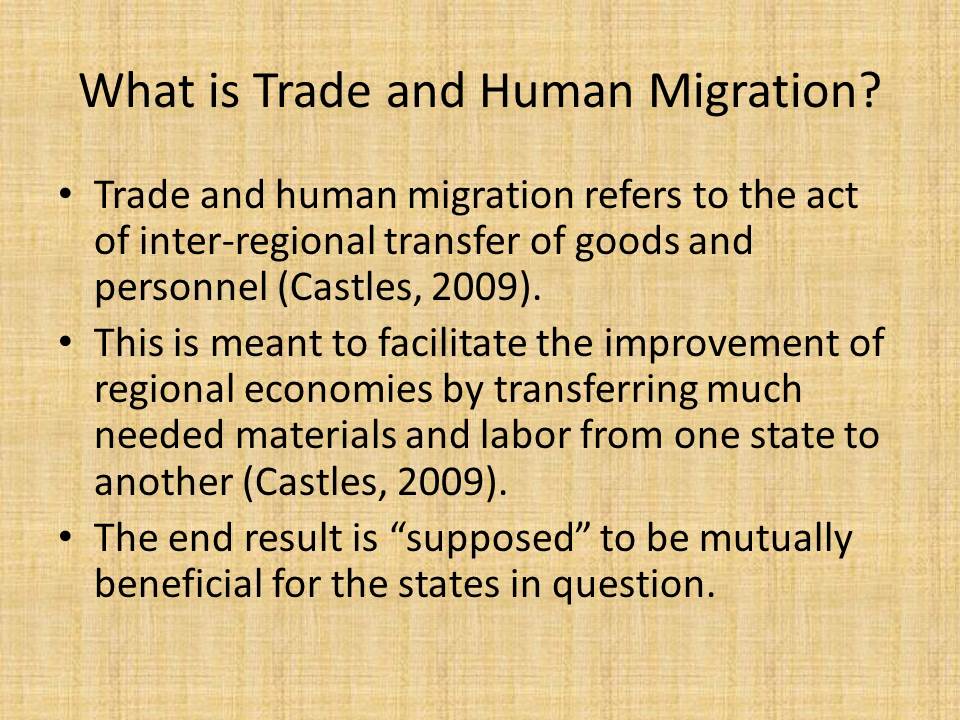
What was CEMAC Supposed to Accomplish
CEMAC was supposed to accomplish the following goals:
- Allow ease of migration in between the member states to allow the transfer of workers from one state to another;
- Remove barriers to trade to encourage higher rates of trade;
- Encourage the creation of joint economic goals and polices.
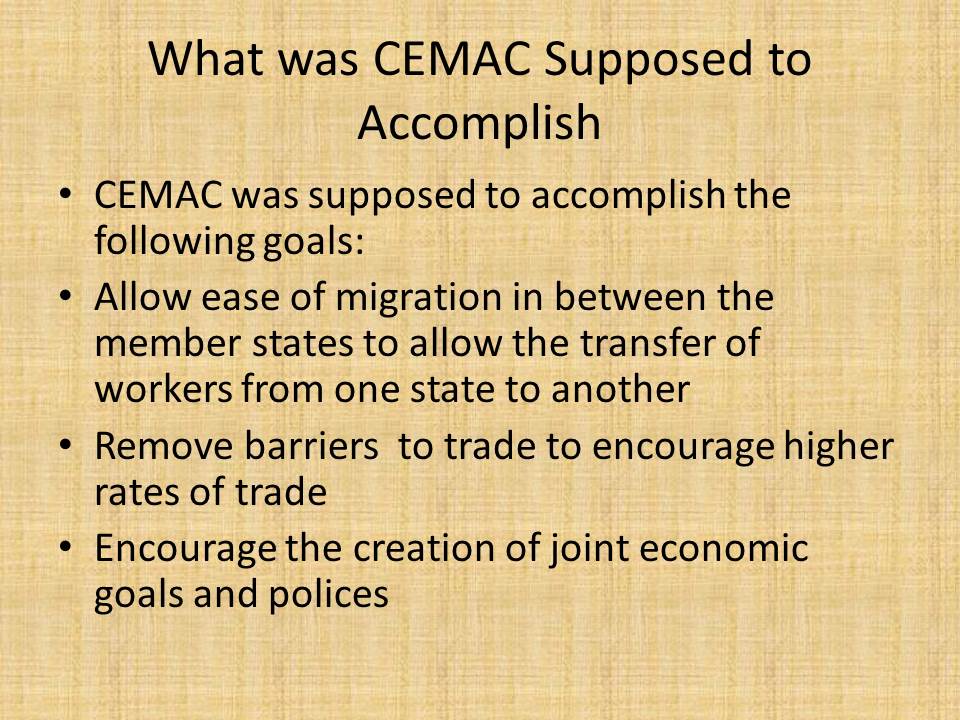
Was it Successful in its Goal?
- Lack of evidence to be sufficiently definitive.
- There are still noted problems regarding the ease of human migration and trade in between CEMAC member states.
- It is still unknown if people and businesses are able to find jobs and do business across borders without significant barriers to entry (Dawid et al., 2012).
- Lack of data that compares economic data with rate of human migration and trade.
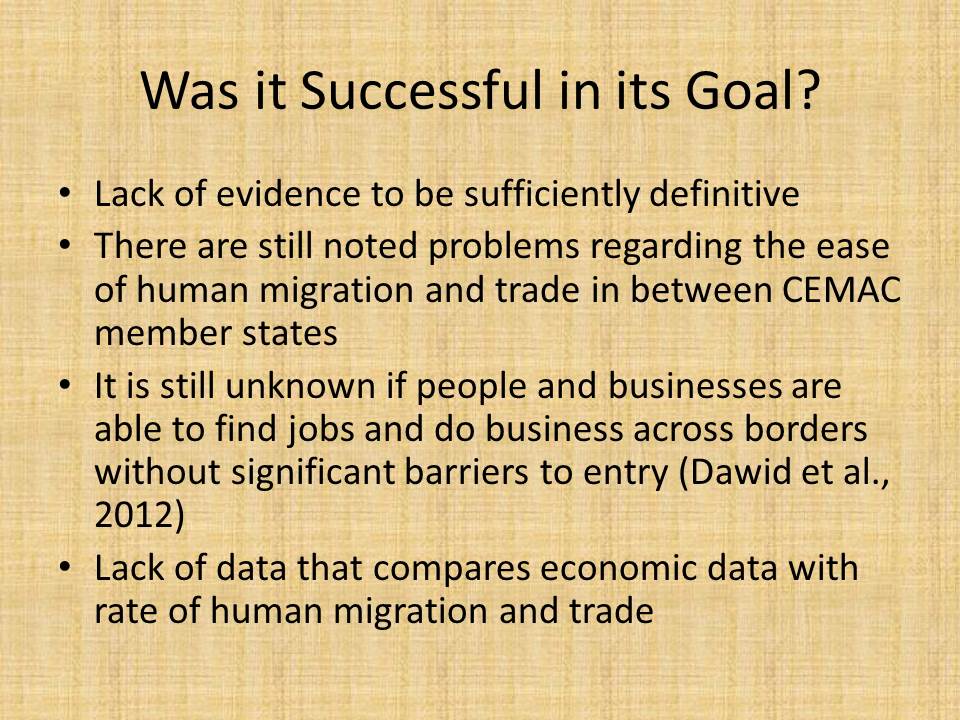
Identified Issues
Reported Cases of Border Conflict:
- Despite the presence of an inter-regional passport that “supposedly” allows ease of travel in between the CEMAC member states, there are still border issues in between the countries.
- This often involves illegal migration or illegal trade going from one region to another (Gibb, 2009).
Barriers to Trade were Still Present:
- Weaker nations viewed their stronger counterparts with a certain degree of distrust in matters relating to economic and trade agreements.
- Within the context of CEMAC this came in the form of barriers to entry that should have been removed yet were still present
Differences in Economic Strength both in Agricultural Capacity and Industrial Capability:
- When examining the member states, it becomes immediately evident that there are differences in their level of agricultural and industrial capacity.
- This is an issue since it encourages the implementation of trade barriers due to the potential for product flooding (i.e. cheap foreign goods entering into the country).
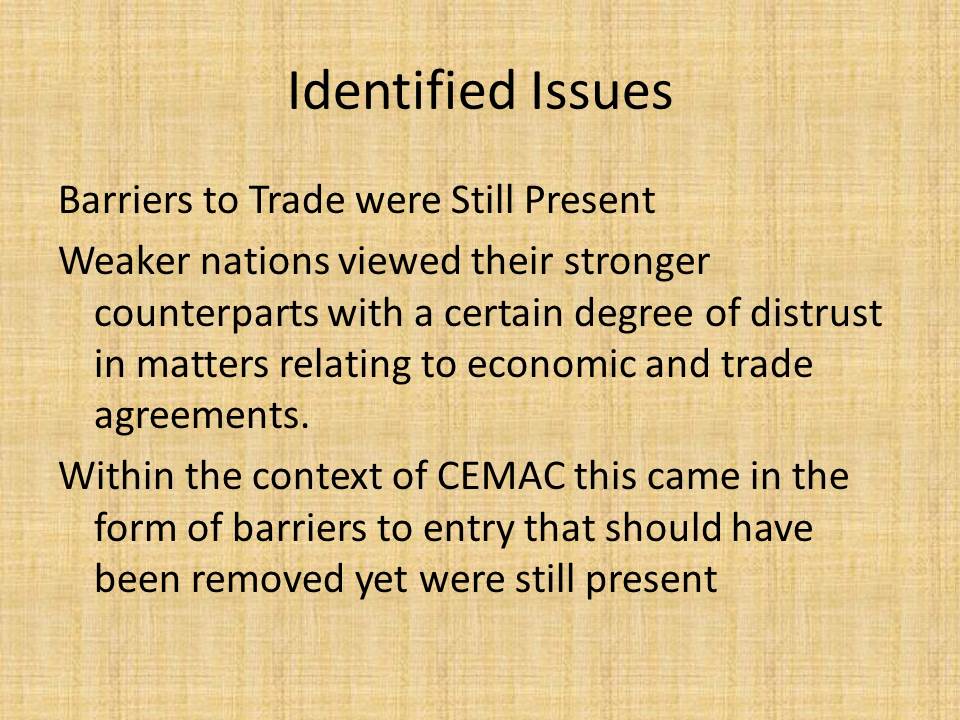
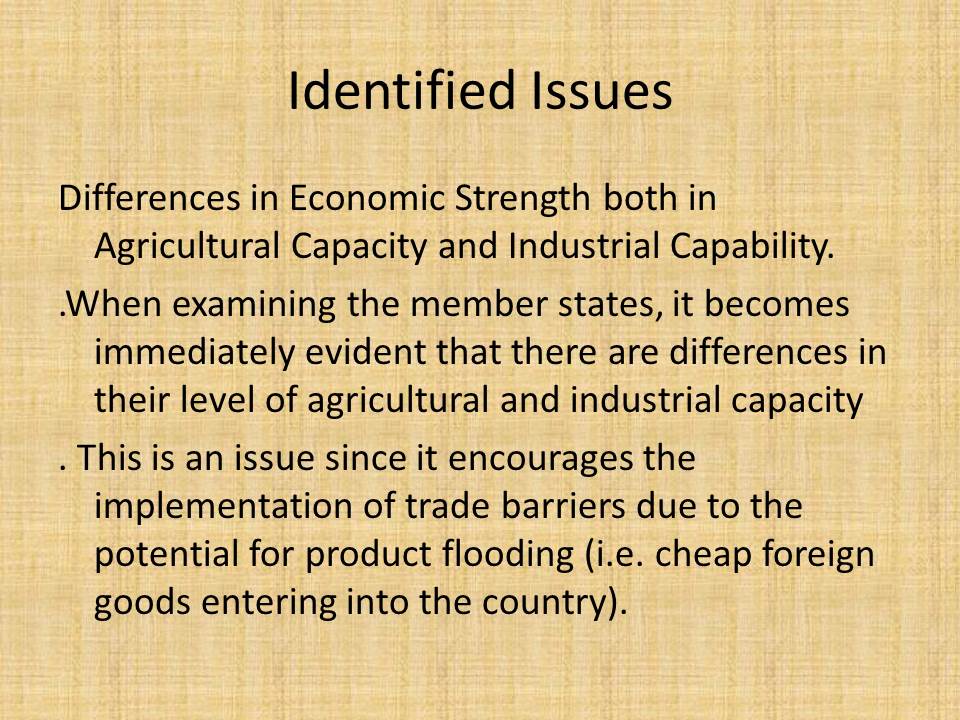
Assumptions of the Study
The main assumption of this study are:
- Regional integration has indeed resulted in some positive economic results for the CEMAC member states.
- However, a considerable degree of distrust still exists among the members, which creates limited instead of outright reformation of current protectionist policies.
- One of the reasons behind this is the unequal distribution of economic power among members of CEMAC with the economically well off (for the region) states such as Gabon, Equatorial Guinea, and Cameroon having advanced considerably in industrialization and trade as compared to the Republic of Congo, Chad, and the Central African Republic.
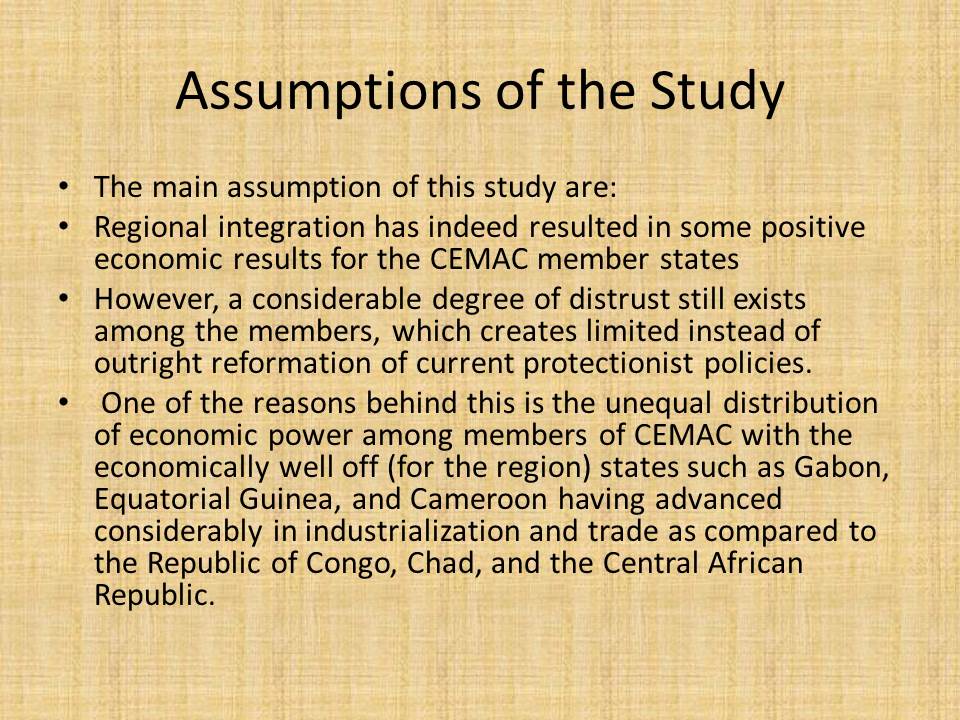
Main Issue: States are Hesitant to Fully Commit to CEMAC
The problems lie in the fact that stronger states tend to gain more from entering into any form of agreement with weaker states by virtue of their economic might (Cyrille, 2010). This may result in the following problems:
- Devastation of their local economy;
- The possibility of product dumping (Fawcett & Gandois, 2010);
- Overly strict export requirements;
- Unregulated human migration.
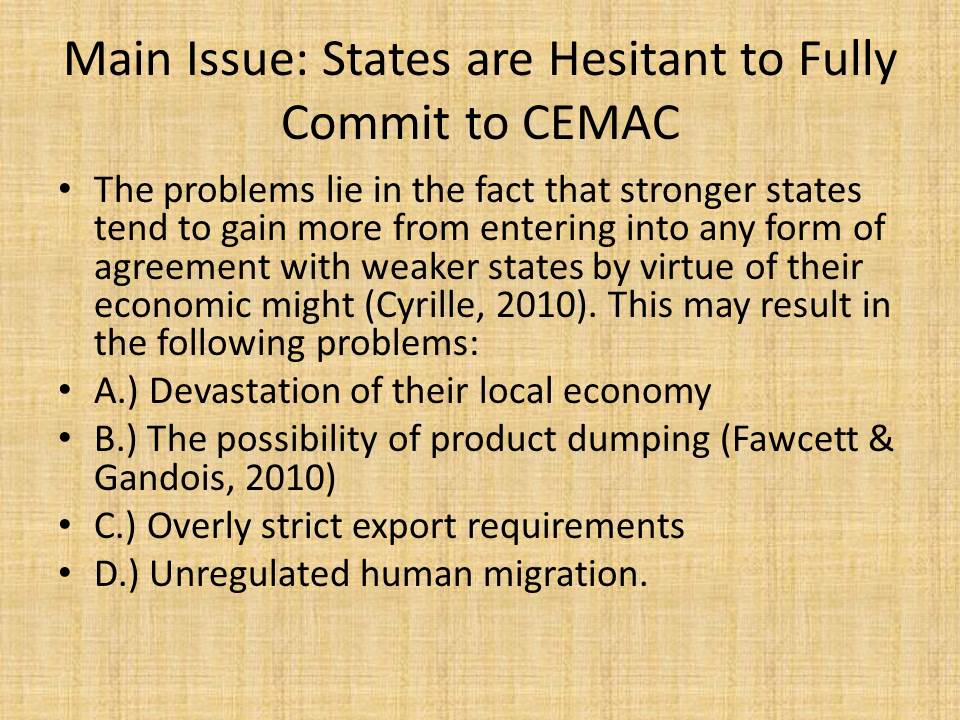
Explaining the Continued Presence of Barriers to Trade and Human Migration
- States oftentimes hesitate to enter into a variety of bilateral and multilateral agreements because of the potential for abuse by the larger state (Badertscher, 2011).
- It is often the case that they would prefer to not enter into the agreement at all, barring some form of protectionist measure.
- Barriers are placed in order to ensure that their local industries would be preserved from undue hardship as a result of direct competition from foreign exports (Badertscher, 2011).
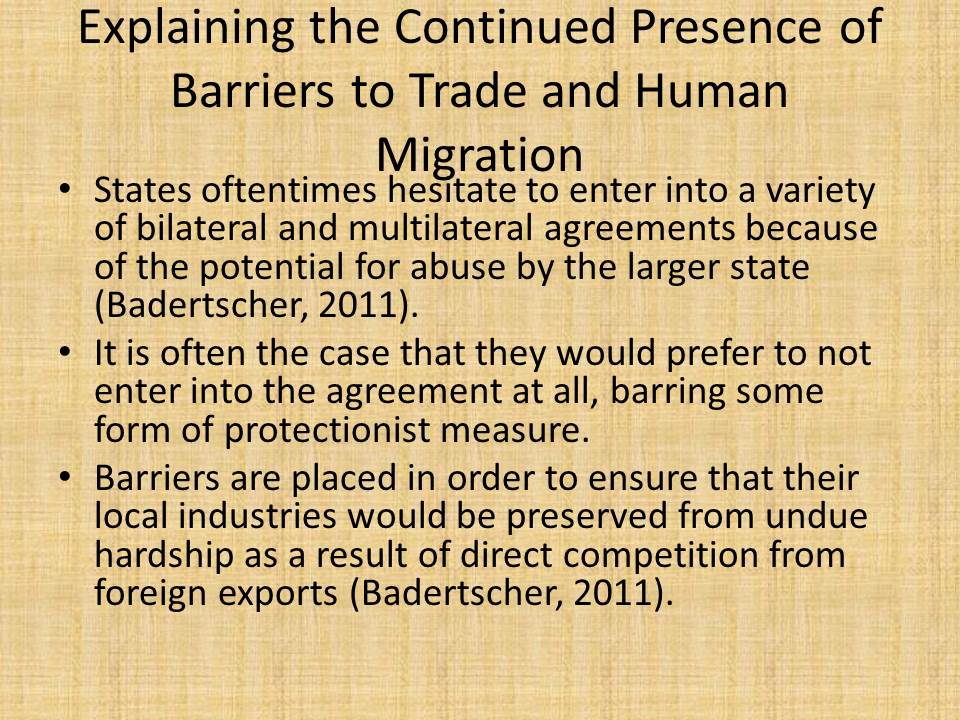
Examining The Problems of CEMAC Utilizing International Relations Theories
Realist Perspective
Realists are under the assumption that cooperation between states is difficult to achieve because of the possibility of cheating and the concept of relative gains between different classes of states.
From the realist perspective, even if states found themselves in a situation where cooperative action would be mutually beneficial, the fact still remains that these states are still concerned about the concept of relative gains that would result from cooperative action (Hall, 2011).
Realism
Under the realist point of view, one state would gain more than the other as a direct result of entering into a cooperative agreement (Wohlforth, 2011).
Based on this, realists state that cooperation is a lot more difficult to achieve than otherwise believed.
They highlight this because of the behavior of states, where they would give up the potential gains accrued through cooperation if such cooperative action resulted in greater gains for other parties, in the cooperative agreement.
Liberalist Perspective
From a liberalist perspective, cheating does also occur; however, instead of relative gains, what occurs is collective actions problems (Hamati-Ataya, 2010; Walker, 2008).
The easiest solution to this problem would be to enact some form of regional cooperative agreement. This ensures a level playing field.
A majority of African states have hesitated, or is unwilling, to enter into a proper arrangement despite the fact that the conflict of interest in this case is one that is merely perceived and not wholly substantiated based on solid evidence (i.e., that cheating would occur or that free trade would devastate their local economies).
Liberalist Perspective
Considering the liberal view, collective action problems for inter-state cooperation can be surmised into two distinct problem sets, namely:
- Achieving cooperation between states is relatively costly to organize, monitor, and enforce (Wilson, 2011).
- Free riding can occur, wherein certain states benefit from thecooperation but do not pay the costs of achieving cooperation (Van De Haar, 2009).
The theory of neo-liberal institutionalism advocates the use of institutions as facilitators of cooperative action between states (Sterling-Folker, 2000). In this instance, CEMAC acts as the facilitating institution.
From the neo-liberal institutionalism perspective, creating institutions, especially qualitative multilateral ones, alleviates the problems connected to Collective Action Problems (CAPs), as well as resolves relative-gains concerns (McQuiston, 2009).
We should keep in mind that, from the neoliberal perspective, institutions are not limited to concepts such as the United Nations but can also be described as “a persistent and connected set of rules, formal or informal that prescribe behavioral roles, constrain activity, and shape expectations” (Hall, 2011).
As such, when it comes to inter-state cooperative action between two or more countries (i.e., the Central African states) the use of institutions becomes a pivotal concept that determines the future of regional cooperation between the parties involved, especially when taking into consideration the positive effects that come about (Cozette, 2008).
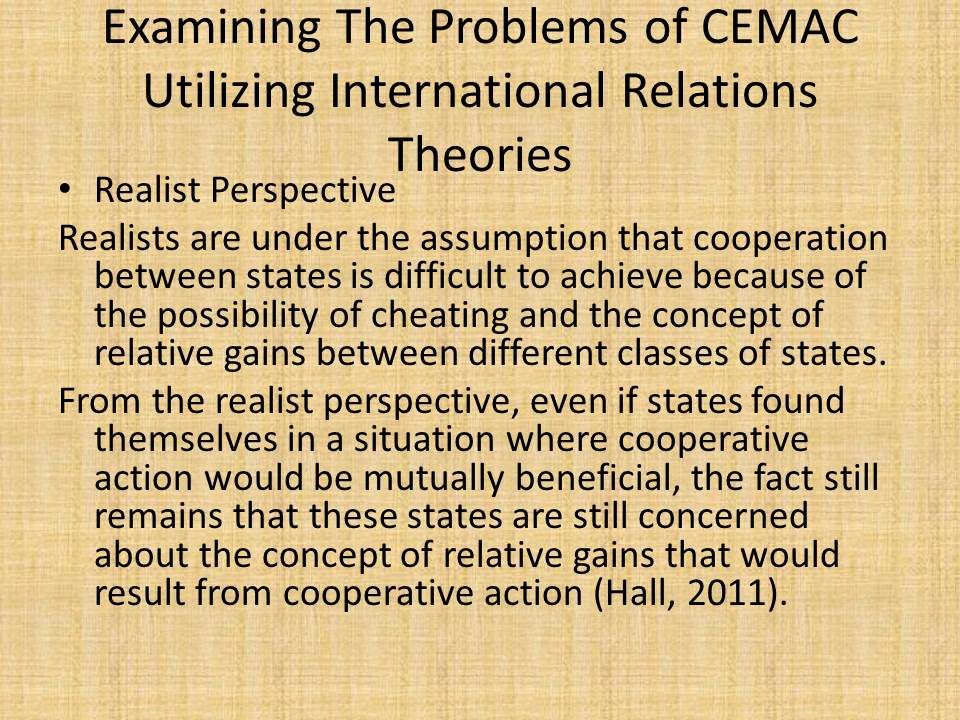
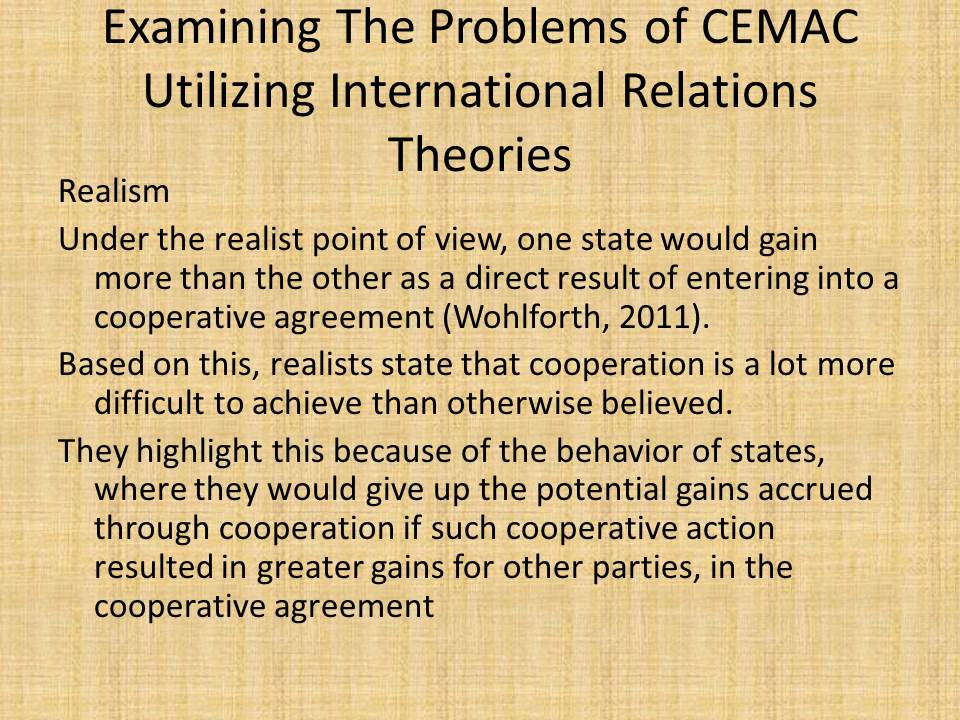
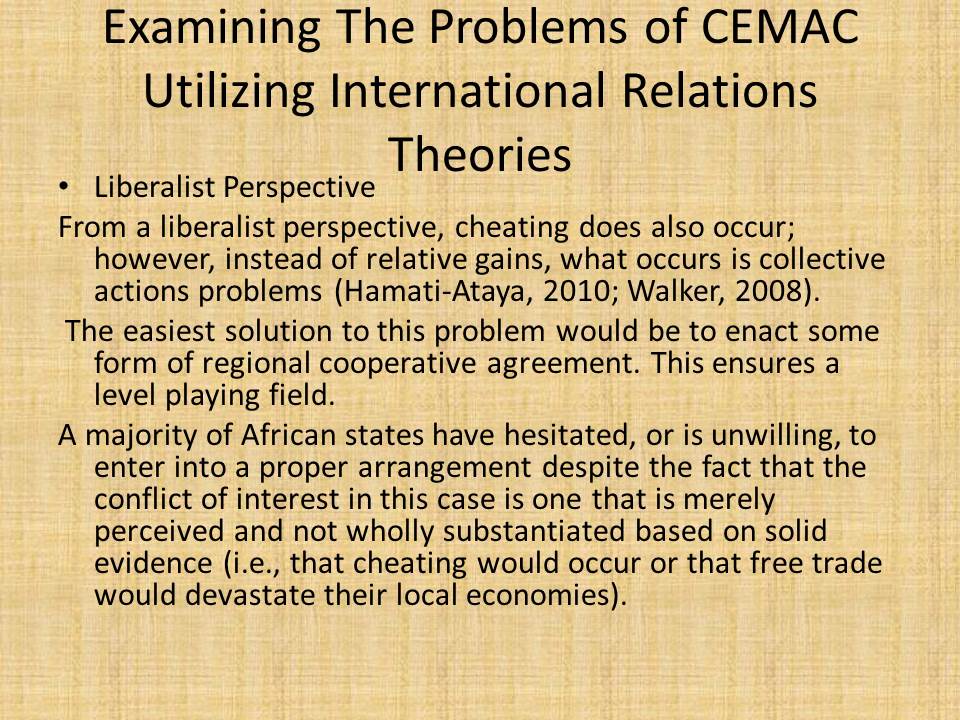
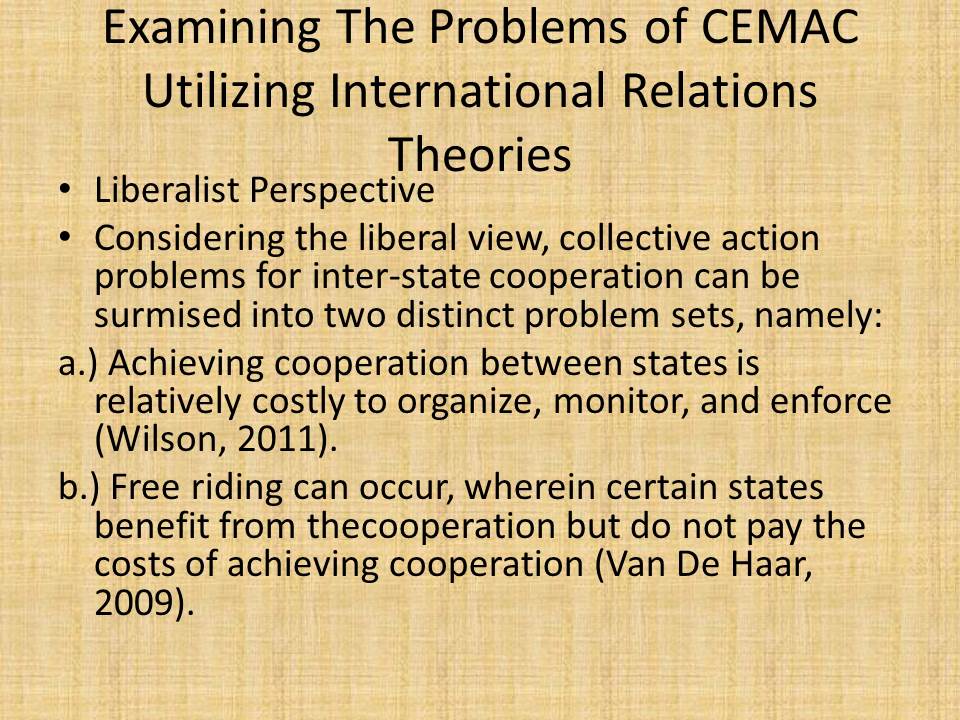
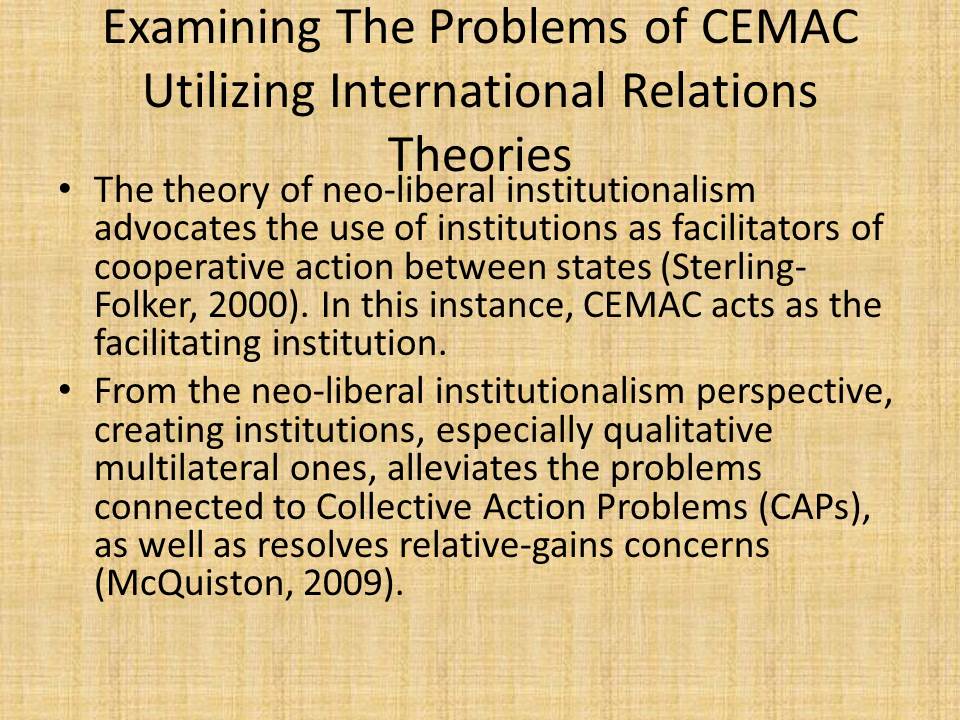
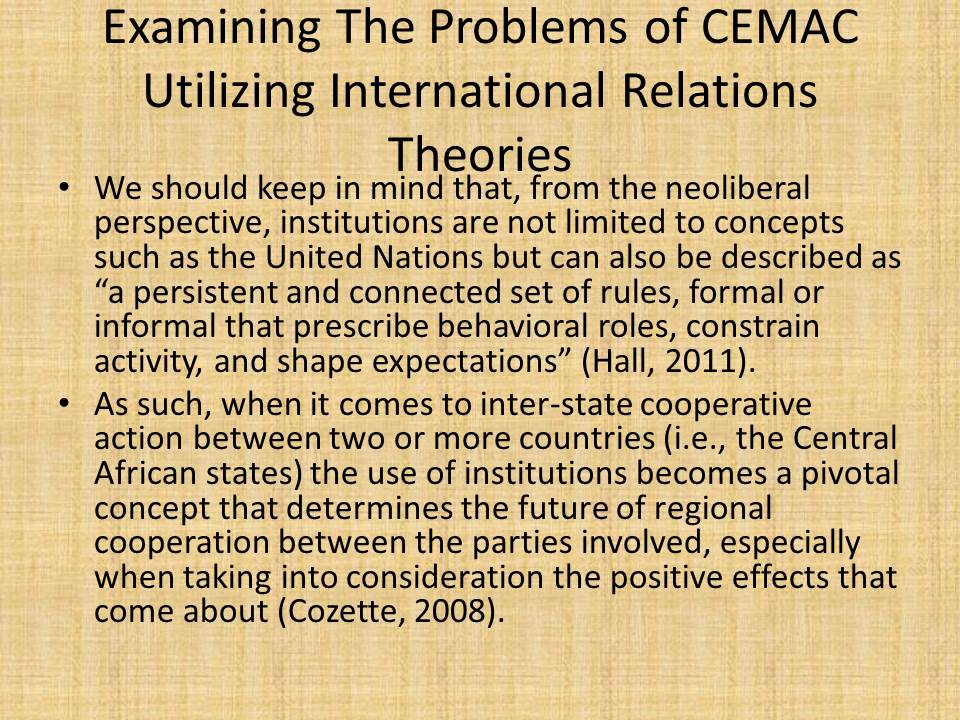
Research Question and Hypothesis
The hypothesis of this study is that although the CEMAC member states say they desire regional integration in order to create better opportunities for the region as a whole, their mutual distrust and inherent competitiveness make cooperation that much harder, which results in an ineffective method of regional integration that is barely felt on the local level.
Qualitative questioning will address the following question
- Has regional integration through CEMAC created a better business environment for entrepreneurs and job seekers?
- This research question is important in understanding the role of regional integration as far as trade and political matters are concerned. It is established that globalization presents new challenges that force states to enter into certain agreements in order to compete favorably in the globalized markets.
- Does hesitance to integrate, seen among the Central African states, result in ineffective policies that do little to advance the cause of regional integration?
- In answering this question I will aim at collecting critical data with regards to the reluctance of many states to be incorporated into the regional grouping. This question will ascertain whether the following is an accurate statement: A number of states are always of the view that regional cooperation is simply a tool that the perceived powerful states use to monopolize the markets.
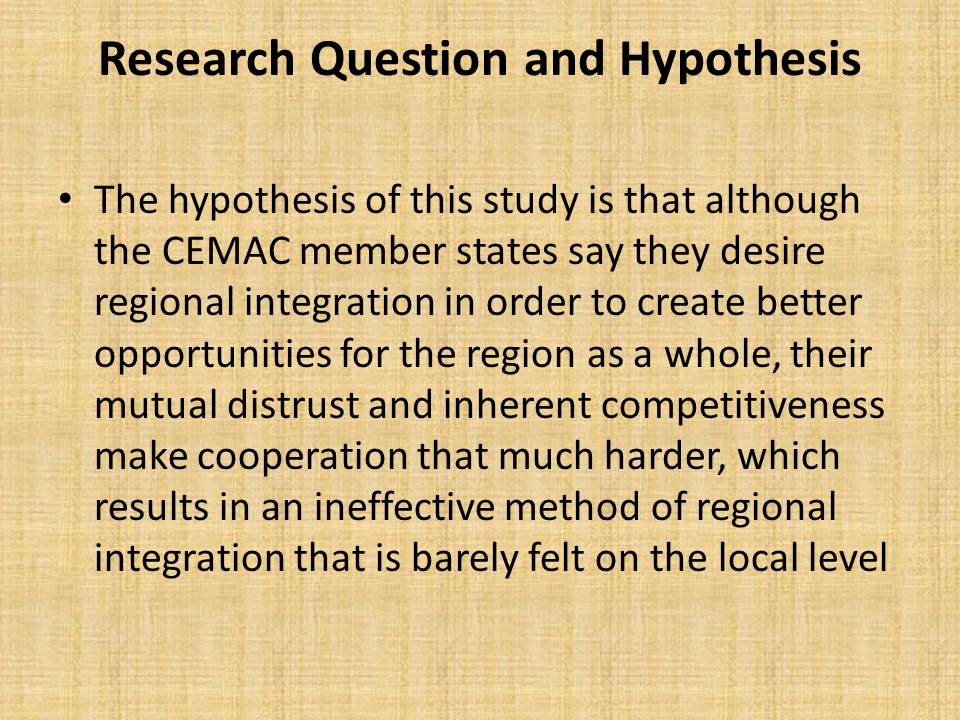
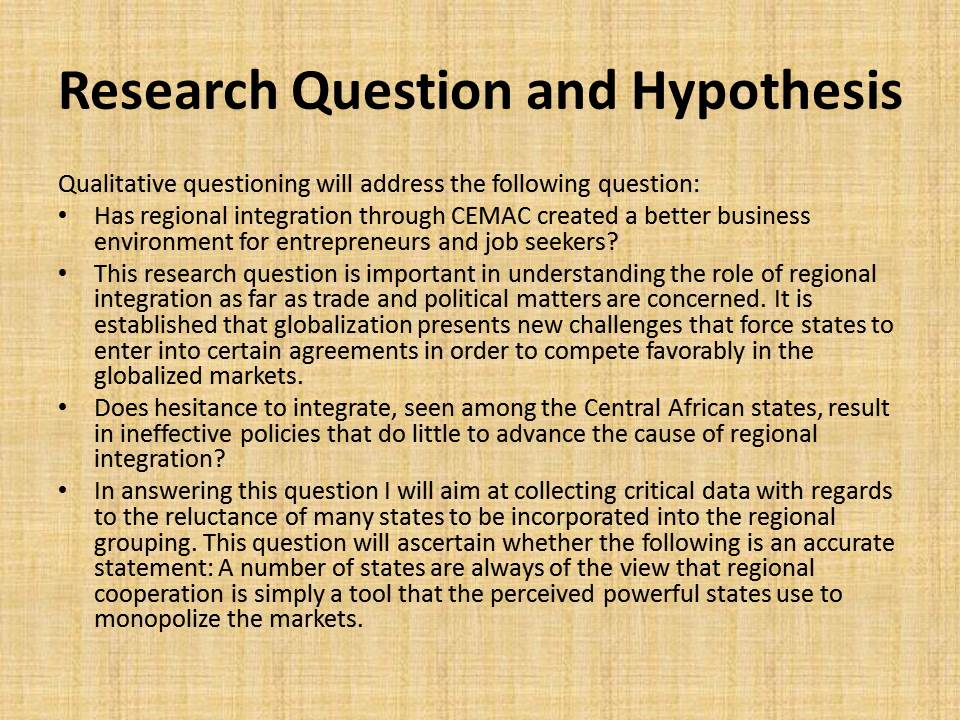
Research Design
The present study will utilize a mixed quantitative/qualitative research design to explore the impact of regional integration on trade and human migration. This is fundamentally a qualitative study with quantitative data gathered to further support the conclusions of the study.
The results of this study will thus be determined by a regression analysis in order to measure the relations between such independent variables as regional integration, particularly the adoption of free-trade agreements, and dependent variables, such as the intensity of trade and migration in this region. Not only that, but the econometric data of the last ten years from CEMAC states will also be examined in order to create a more in-depth analysis on the economic effects of regional integration.
I will also rely on such qualitative methods as interviews in order to see how regional integration affected the lives of urban populations in Central African countries. It is expected that through a combination of the views of local residents of the CEMAC member states, as well as the econometric data gathered, I will be able to discern whether any positive, negative or even negligible effects exist that have occurred as a direct result of the regional integration brought about through CEMAC.
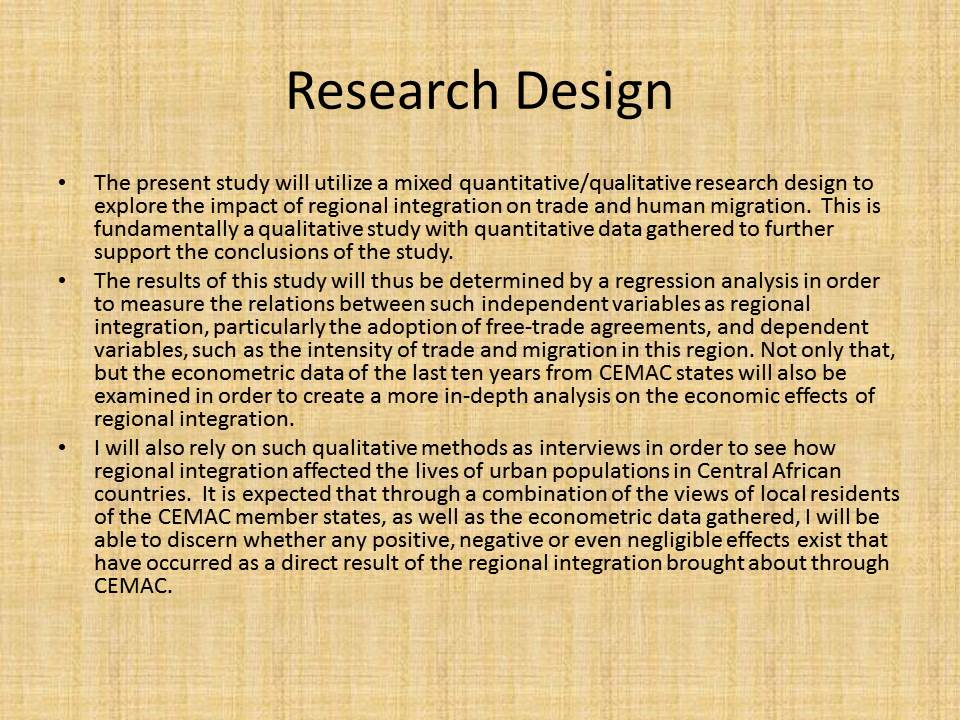
Variables
The independent variable in this study consists of the econometric data that I will gather, and the dependent variable will consist of the responses gained from the various research subjects who will be recruited for this study.
I anticipate that through a correlation between the researched econometric data and the responses of the research participants, I will in effect be able to make a logical connection regarding the positive or negative effects of regional integration on trade and human migration.
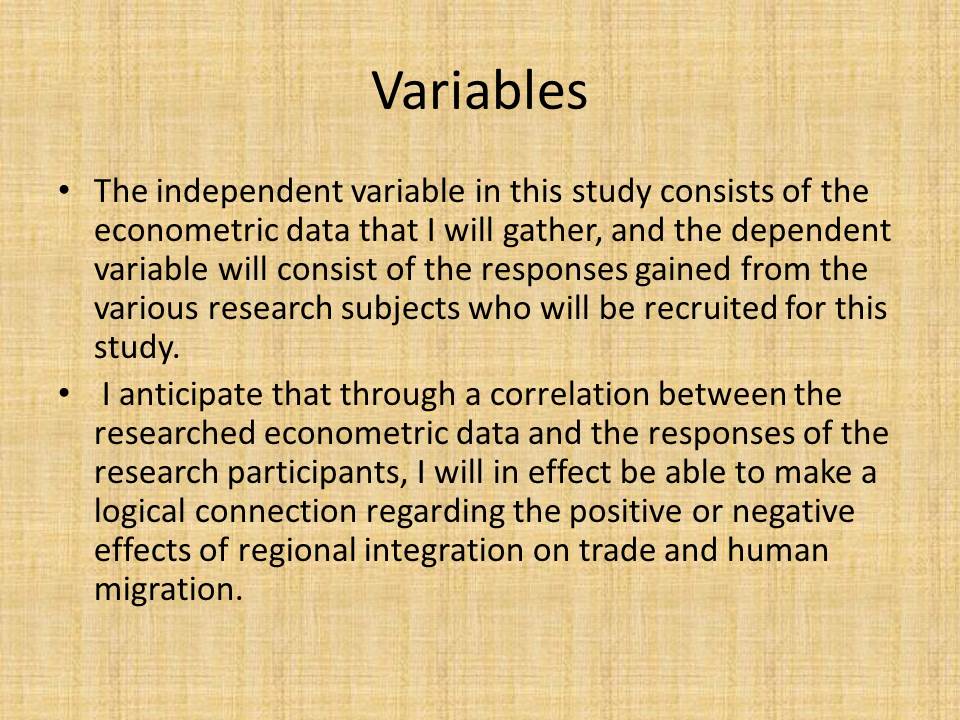
Limitations
As mentioned earlier, this study will limit itself to primarily distributing questionnaires to members of the urban populace within the CEMAC member states.
Aside from this, the research will avoid an examination of the other states within Africa that have undergone regional integration because of the necessity of having to create an even more expansive literature review and population examination that would go beyond the initial premise of this examination.
In relation to the econometric data I will examine, the research will primarily confine itself to a 10-year period, starting from the latest available data and going back 10 years from that particular point. Although it may be true that econometric data spanning a far longer period is available, I decided that a 10-year period would suffice for the needs of this study.
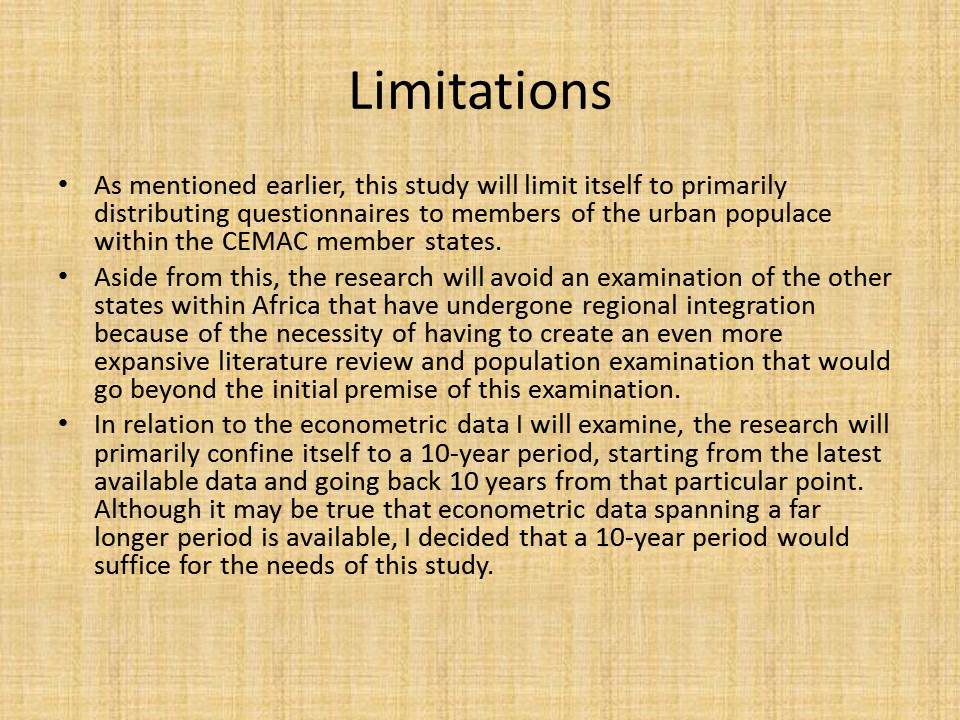
Significance of the Study
Although extensive studies exist that have examined the various problems that have impacted Africa, few have focused on a combination of the personal opinion of the local residents alongside that of econometric data. This study will lead to the creation of detailed picture of the impact that the current trend in regional integration has on local trade and human migrations within the context of Central African states.
Currently, it is the prevailing consensus that regional integration is not necessarily a seamless process, despite the potential this has in creating positive economic and social effects for the states that enter into it. This was seen in the case of the European Union, the Association of Southeast Asian Nations (ASEAN), the Arab League, and a variety of other examples of regional integration, which current prevailing literature shows were created over time and after a considerable degree of negotiation because of the economic imbalances of the member states.
From these examples, it is clear that for any potential for relative gains to occur, which would result in a greater predilection toward not entering into a bilateral or multilateral agreement, will not have the results for all member States because of the perception that gains could not be shared equally.
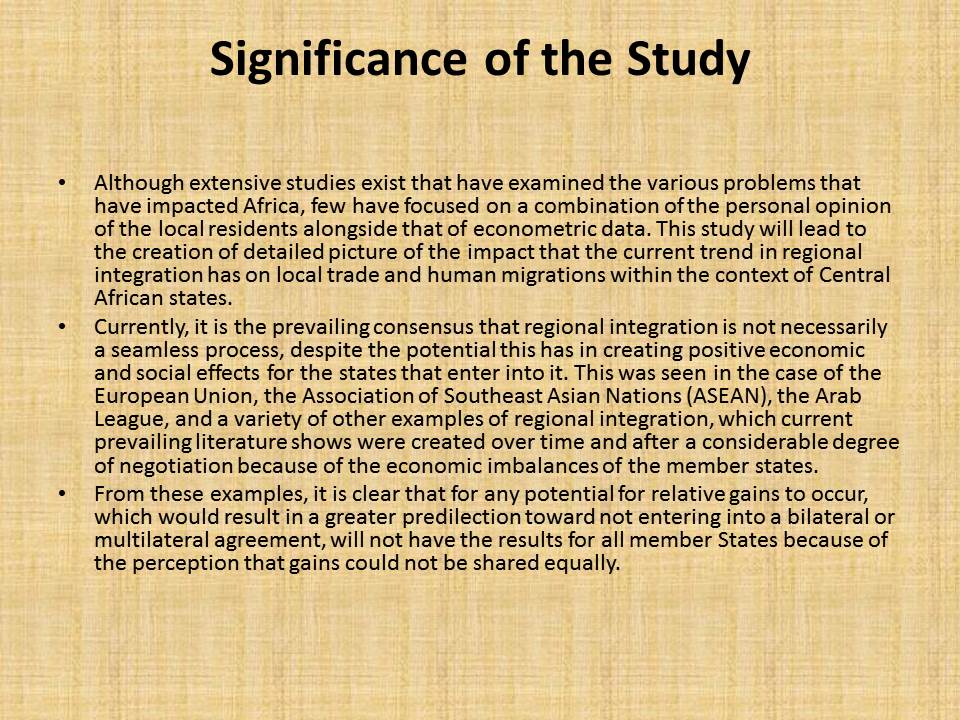
Research Constraints
In terms of the social analysis, primary research has been conducted to fill some of the evolving gaps and to get a better insight into the matter.
Yet, it must be noted that the time constraint only allows structured interviews/questionnaire distribution with an unrepresentative number of people, and also a limited flexibility when conducting the interviews/distributing the questionnaires.
A general overview is therefore not possible, although the statements certainly add to the knowledge about the impact of regional integration.

Study Delimitations
Overall, the data-collection process is expected to be uneventful; however, some challenges may be present in collecting demographic/economic data during the past 10 years because of the inherent limitations in data-collection procedures by the Central African states utilized in this study.
Such issues, however, can be resolved through access to online academic resources such as the EBSCO hub, Academic Search Premier, Master FILE Premier, Newspaper Source Plus, and AP News Monitor Collection.
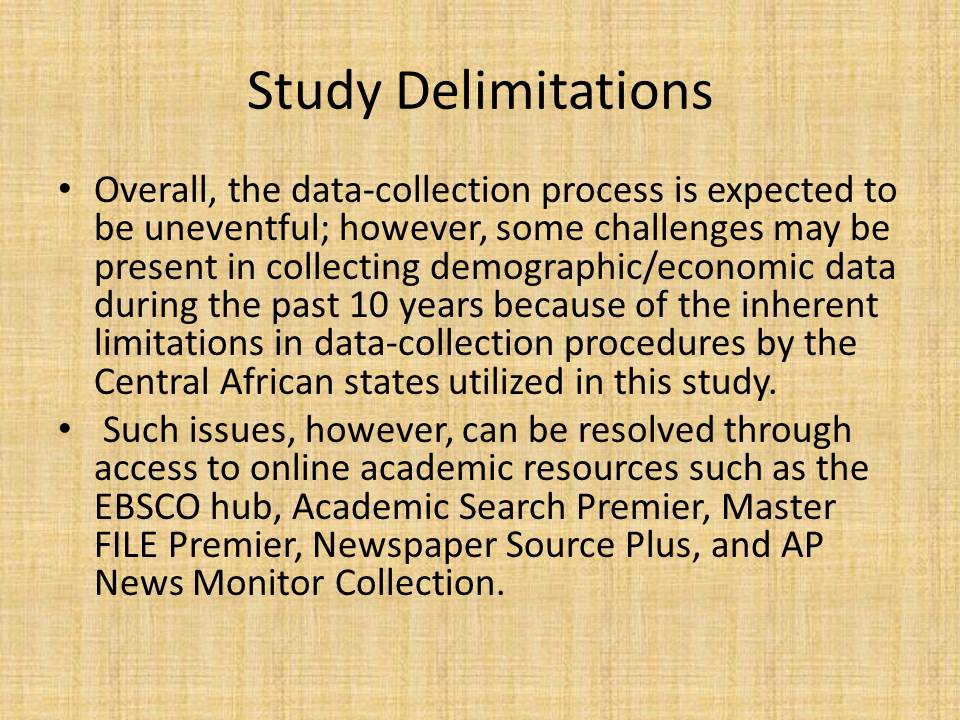
Conclusion
Taking this into consideration, I assume that although a certain degree of regional integration is present as a result of CEMAC, the creation of broad cooperative agreements would be difficult to achieve as explained by the realist theory, would involve inter-state cooperation, and as a result would manifest itself in the form of an insufficient or ineffective degree of economic cooperation.
In the case of the CEMAC member states, this manifests itself in the form of the prospective lifting of tariffs that have yet to be fully implemented, as well as considerable levels of border tensions despite the fact that all members of CEMAC have access to a regional passport system that allows transit in between the various member states without undue problems.
Thus, from the various facts presented in this section it can be seen that a certain degree of justification exists behind my stated assumptions regarding the potential problems with regional integration in the case of CEMAC.

Reference List
Agbetsiafa, D. K. (2010). Regional integration, trade openness, and economic growth: Causality evidence from UEMOA countries. The International Business & Economics Research Journal, 9(10), 55-68.
Background Note: Central African Republic. (2005). Background notes on countries of the world: Central African Republic, 1.
Badertscher, E. (2011). Central African Republic. Our World: Central African Republic, 1.
Castles, S. (2009). Development and migration—migration and development: What comes first? Global perspective and African experiences. Theoria: A Journal of Social & Political Theory, 56(121), 1-31.
Cozette, M. (2008). What lies ahead: Classical realism on the future of international relations. International Studies Review, 10(4), 667-679.
Cyrille, S. M. (2010). On the liquidity effect of monetary policy in the CEMAC countries: An empirical investigation. International Journal of Economics and Finance, 2(3), 208-227.
Dawid, H., Gemkow, S., Harting, P., & Neugart, M. (2012). Labor market integration policies and the convergence of regions: The role of skills and technology diffusion. Journal Of Evolutionary Economics, 22(3), 543-562.
Fawcett, L., & Gandois, H. (2010). Regionalism in Africa and the Middle East: Implications for EU studies. European Integration, 32(6), 617–636.
Hall, I. (2011). The triumph of anti-liberalism? Reconciling radicalism to realism in international relations theory. Political Studies Review, 9(1), 42-52.
Gibb, R. (2009). Regional integration and Africa’s development trajectory: Meta-theories, expectations and reality. Third World Quarterly, 30(4), 701- 721.
Hamati-Ataya, I. (2010). Knowing and judging in international relations theory: Realism and the reflexive challenge. Review of International Studies, 36(4), 1079-1101.Retrieved from EBSOhost database.
McQuiston, J. (2009). The Aral River Basin Crisis, Neorealism, and Neoliberal Institutionalism. Conference Papers – Midwestern Political Science Association, 1.
Sterling-Folker, J. (2000). Competing paradigms or birds of a feather? Constructivism and neoliberal institutionalism. International Studies Quarterly, 44(1), 97.
Van De Haar, E. (2009). Classical liberalism and international relations. Policy, 25(1), 35-38.
Wohlforth, W. C. (2011). Gilpinian realism and international relations. International Relations, 25(4), 499-511.